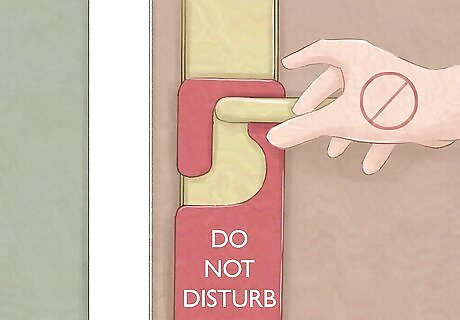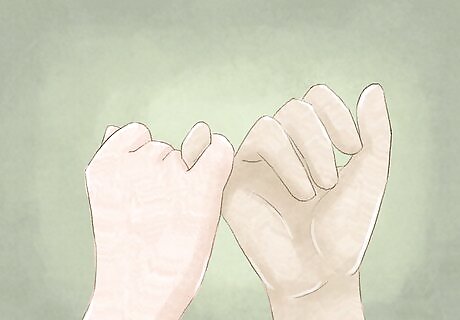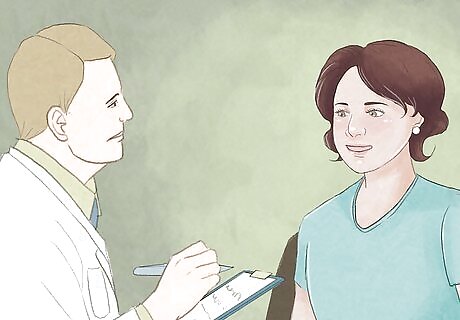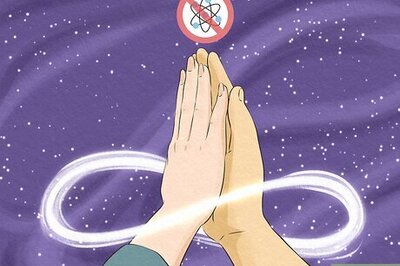
views
Understanding and Communicating with Your Partner

Be direct and tell your partner what you need from them. Avoid giving passive-aggressive hints or wishing your partner would just take initiative in your relationship. If you’re committed to someone with an avoidant attachment style, verbalize your emotional needs and communicate clearly. For example, maybe you want your partner to initiate more date nights. Try saying something to them like, “I would feel loved if you would schedule one or two date nights for us every month.” Or, you may need to say something like, “I know that you like your alone time, and I respect that. We also need to spend time together. Can we plan on making Friday nights a regular date night on our calendar?” If you’ve had a hard day and need to process it with your partner, say something like, “I had a bad day and need to talk it out.”About the Avoidant Attachment Style: If your partner has this attachment style, they’re probably very independent and worried about being overcommitted, both in intimate relationships and in friendships. They may dislike spending time in groups and often be “too busy” to see others. They may believe they don’t need others for connection and have a hard time being vulnerable.

Give your partner lots of space rather than chasing them. If you pursue your partner too forcefully, they may retreat even further and refuse to communicate with you. They could interpret your desire for intimacy as a threat to their autonomy and decide they can’t risk getting closer to you. When you want to talk, try to do so when your partner is feeling safe and calm and not during a fight or stressful time. For example, if your partner is quiet and reserved and has said “no” when asked if they wanted to talk, try to let it go. Don’t keep asking them to share. If they want to, they will seek you out. If he doesn't immediately respond to your texts, give him time before you follow up. For your mental health, it’s really important that you have your own outlets and emotional supports. Since you can’t rely on your partner to always be a support for you, make sure you’re cultivating other friendships. Respecting their space is a great way to make them trust and love you more.

Focus on understanding your partner rather than trying to change them. Your partner has to decide to change on their own. Encouraging or cajoling them won’t work, especially because they may not understand the reasons behind their attachment style yet. Instead, research their personality style and make an effort to understand your partner’s actions in that frame. For example, if you get frustrated that your partner doesn’t want to go out every night over the weekend, avoid trying to guilt them into spending more time together. Instead, step back and think about how they may need a slower, quieter pace to feel safe. If your partner struggles to make friends, don’t try to continually force double dates. Instead, recognize that your partner may be fearful of being rejected or suffering from low-self esteem.

Remember that your partner’s avoidant personality isn’t a reflection on you. It can be super hard to not see your partner’s actions as a reflection of how they see you, but trust that they would be the same way no matter who they were in a relationship with. Their avoidance is rooted in how they developed secure or insecure attachments when they were little. Sometimes it’s tempting to think things like, “If I were better things would be perfect,” or, “He doesn’t want to spend time with me so I must be annoying him.” You can’t blame yourself for their attachment style, though. They would be operating the same way no matter who they were in a relationship with.
Connecting and Fostering Intimacy

Be affectionate toward your partner with both your words and actions. Try touching your partner’s shoulder when you walk by or kiss the top of their head unexpectedly. Pick up their favorite dessert on your way home from work or get up early to make them a cup of coffee. Tell them when they look nice or if you’re impressed by something they did. Think of small things you can do every day to show your partner that you care for them—doing so will help combat those barriers they’ve built because of their fear of rejection. It can be really hard to emotionally give to a partner who may be closed off or withdrawn. Talking with a professional counselor can help you maintain healthy boundaries for yourself so you don’t get hurt.

Follow through on promises to show you’re dependable and trustworthy. Your partner is probably prepared to be let down, whether or not they would admit to that. Be consistent in your approach with them and do what you say you’re going to do to build a foundation of trust in your relationship. For example, if you say you’re going to cook dinner, make sure to cook dinner. It may seem simple, but not following through on a small task can make a person with an avoidant personality think that you’re unreliable with bigger things, too.

Celebrate special or important moments together to bolster your intimacy. It may be tempting to focus on the things you’re unhappy about in your relationship, but doing so can negatively impact your connection with your partner. Make it a point to notice the positive things and verbally celebrate both big and small accomplishments in your lives. For example, if you or your partner had a challenging week at work, initiate going out for a special drink or dinner together to celebrate making it through. Try to pay attention to the things your partner does for you—whether it’s complimenting you, cooking a meal, cleaning up, picking up something from the store, or some other small task.

Find a shared activity you can enjoy together. A big part of fostering a healthy relationship is spending time together, and that is true for you and your avoidant partner. Even if they value their alone time, there still needs to be some common ground in your relationship. Even watching a TV show together every night can be a way to connect. Sit down with your partner and ask them if there are any activities or hobbies they’ve always been interested in pursuing. This can even be an activity done at home so it doesn’t require an out-of-home commitment. For example, if your partner loves old movies, you could work your way through the “Best Picture” Oscar winners, starting in 1928.
Meeting Your Own Emotional Needs

Cultivate emotionally supportive friendships. Have weekly dates with your friends and do your best to be open with them about what you’re dealing with in your relationship. Call them, text them, or email them to stay connected and foster healthy emotional relationships. If your partner likes a lot of alone time, you may feel less frustrated if you have people in your life that you can connect with regularly. One-on-one friendships, groups of friends, or even social or support groups can all help fill this role in your life.

Invest in your interests and hobbies. Your relationship with your partner is important, but it’s also important for you to fill yourself up and spend time on things you love independently of them. Make spending time on yourself a priority and schedule in daily or weekly times to do things you love. For example, if you love to read, spend your lunch break with a good book. Consider taking a class to learn something new or cultivate a skill you already have, like baking, cooking, exercising, or crafting.Double Benefits to Having Hobbies: Cultivating your interests is good for your emotional health, but it’s also good for your relationship. When your avoidant partner sees you doing things on your own instead of relying on them to meet many of your needs, they may relax a little. It could help them trust that your relationship is secure and that they won’t be responsible for all of your emotional needs.

Go to therapy to work through your personal and relational issues. While you may also be encouraging your partner to go to therapy, consider seeing someone professional yourself. A therapist could give you some great resources and tips for how to be in a relationship with someone with an avoidant personality. They may also help you keep tabs on your emotional health, which is super important. Having outside eyes on your situation may illuminate patterns that you can’t see yourself from the inside. If your relationship is neglectful or harmful in any way, a therapist may also be able to help you figure out what the right next move it.

Communicate your boundaries to your partner and follow through on them. Your boundaries may look different depending on your relationship, and only you can determine what’s most important to your emotional health. A boundary should help reinforce the choices you’ve made to respect yourself. For example, if it’s hurtful for you to come home and not be acknowledged by your partner, you could say something like, “We need to great each other when we get home. It’s not okay that you ignore me when I get home from work.” Or, you may want to say something like, “I care about spending time with you, but I also need to see my friends. It doesn’t mean I care more about them than you.”

Recognize toxic traits and know when it’s time to end the relationship. For your relationship to work, both you and your partner have to take responsibility for your roles. If your partner refuses to engage with you, won’t talk to a professional, and continually disregards your needs, they may not be willing to take ownership of their avoidant-attachment stye. Choosing to end a relationship is a really hard decision. You may fear making your partner feel rejected and abandoned or having to start all over again with someone new. These are common fears. Remember that you deserve to be in a loving, supportive relationship.


















Comments
0 comment